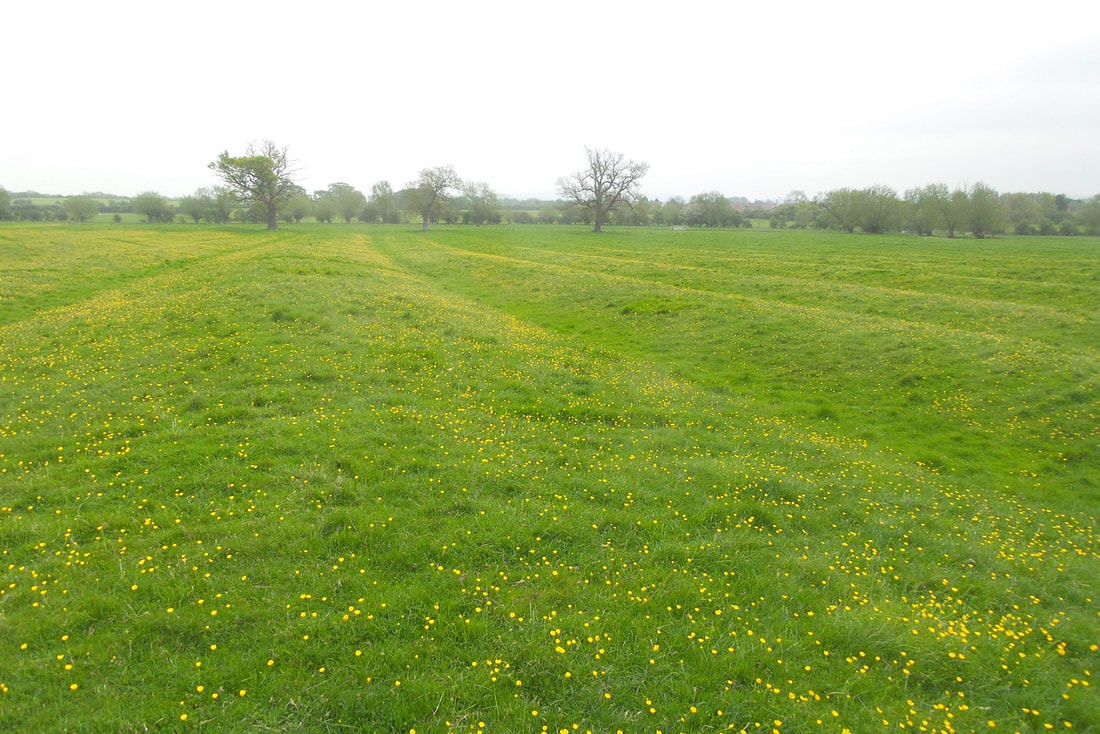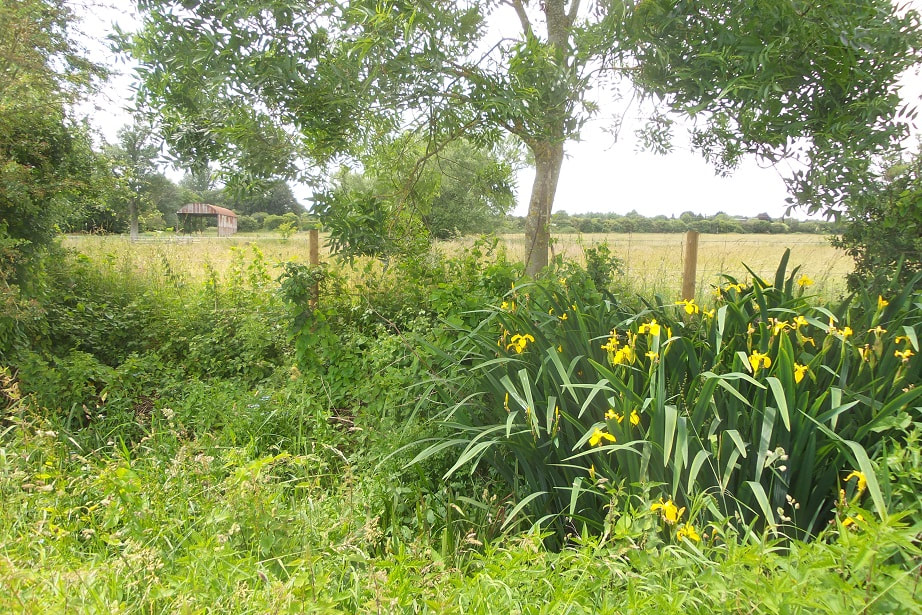Littleton Pastures
The most obvious features of this site are the wide ridges and furrows which are characteristic of an unspoilt Medieval field system. When walking from South to Middle Littleton, the furrows get deeper and the ridges get higher, like a medieval roller-coaster. This part of the site is known as Cow Leasow and it has a diverse flora including the beautifully scented Lady’s Bedstraw which was used to fill ladies’ mattresses in days gone by. Sorrel is very common giving the tops of ridges a red hue in summer, yet it is almost absent from damper ground in the furrows. Bird’s-foot-trefoil, Bulbous Buttercup, Cowslip and Burnet Saxifrage are all present and are increasing since a return to seasonal grazing management. To enable the grazing, fencing has been erected, with a permissive path around the edges of the field joining to the existing rights of way. The southern boundary marks the parish boundary between South and Middle Littletons.
An old pond at the north end of the willow-lined, spring-fed ditch was partly re-instated in February 2016 with further work in 2017. Frogs breed in the ditch and Toads have been noted so it is hoped that the pond will provide further breeding habitat. The ridge and furrow disappears into the flood plain of the Littleton Brook as the site levels to the east just beyond two veteran trees, an Ash and an Oak. A second Ash was lost to storm Eleanor in early 2018. This large fallen tree will remain in situ to provide important habitat for a miriad of mini-beasts. Three Oaks were planted in line with the veteran trees by children from The Littletons School in 2016 to mark Queen Elizabeth’s 90th Birthday.
In mediaeval times the flat area in the flood plain would have been managed as a hay meadow, so the lowest area, known as Cow Ground has been fenced to allow hay cutting and aftermath grazing once again.
In mediaeval times the flat area in the flood plain would have been managed as a hay meadow, so the lowest area, known as Cow Ground has been fenced to allow hay cutting and aftermath grazing once again.
|
The Littleton Brook meanders in a southerly direction dividing the site in two. Kingfishers feed here and there is a diverse flora associated with the brook’s course. Across the brook is Corner Ground and the adjacent Lower Thistly Field which are managed as sheep pasture with year-round grazing. The grassland is agriculturally improved and very fertile resulting in locally abundant Creeping Thistle and White Clover. These two fields are divided by an old defunct Hawthorn hedge. |
In the east corner is a plantation of semi mature oaks (80 – 100 years old), planted on ridge and furrow. In 2017 native trees and shrubs supplied by OVO Energy were planted adjacent to the oaks with the help of children from The Littletons School. This area is managed as scrub with an annual cut of some of the grass to allow a woodland-edge effect to establish. The long grass immediately attracted insects and in the first summer Spotted Flycatchers were seen feeding here.




